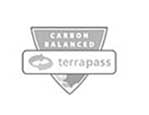Spray Foam Insulation Kits FAQs
Technical Specifications Shipping Info Recommended R-value
Download SDS - Class 1 [PDF, 113KB]
Download Instructions [PDF, 149KB]
How to Buy FAQs
The 202 and 602 kits come with 10 nozzles and 3 fan spray tips. You also get 3 more nozzles and 10 fan spray tips with Free Supersizing for a total of 13 each. This time 13 is your lucky number because this is usually plenty of nozzles and few people need to purchase more.
Every time you stop spraying for 30 seconds or more, you must change the nozzle. This keeps the foam from clogging the gun. If the gun becomes clogged, you’ll need to purchase a new one.
How to Use FAQs
It depends on your project.
Floor of attic: Just one coat will seal the air flow from the living space to the attic. Follow with fiberglass or cellulose to build up the R-value.
Rim Joists: 2 to 3 inches. If you are sealing them in to make a finished basement, follow the guidelines below.
Walls/Cathedral Ceilings: While you can fill the entire stud cavity with foam, you can also do something called Flash and Batt. This is where you put 50% of the R-value in closed cell Foam It Green, and fill the rest of the stud space with fiberglass (or other insulation).
The layer of foam helps the other insulations perform better by providing the tight air seal. If you want to do all spray foam insulation, you’ll be glad you did, because every additional inch maximizes the R-value for that space, requiring less and less energy to heat or cool your home.
65-85 degrees Fahrenheit, 75 degrees is the ideal temperature for the surface you plan to spray. This can be done artificially with a work lamp or space heater too. Don’t get it too hot or you’ll have adhesion problems as the foam slides right off the surface. The wall/board/pipe/etc doesn’t need to be heated through, just the superficial surface the foam will bond to.
The tanks also need to be between 65-85 degrees Fahrenheit for maximum performance. There is a liquid crystal gauge on the B-tank that will show you when the tanks are in range. If you are artificially heating/cooling the tanks, keep in mind that since they are steel, the tanks will be in range before all the chemical is. If you are bringing a tank up to temperature, shake the tanks to make sure all the chemical is a uniform temperature.
Do you use the area for living space? If yes, do the rafters. If no, do the floor joists.
Make sure you check your local building codes and also with your shingle manufacturer. Some void warranties because they claim the foam does such a good job insulating that it harms the tar. Other companies believe spray foam insulation is fine.
This is a very common challenge that many people face. Many of our homes and buildings have no insulation at all. While this kept costs low for the builders, it means you now pay huge energy bills to make up for it.
When filling existing walls or ceilings, use Foam it Green Slow Rise Formula. Check out our video on how to maximize your results and minimize the risks.
There are risks involved with any expanding foam, regardless of type or company. When you can’t see where you are spraying, you run the risk of not actually filling the cavity correctly, leaving places for the air to still pass through. There is also a risk of causing a blockage and blowing out the drywall or even plaster. Choosing Foam it Green Slow Rise formula helps maximize your chances for success, but it’s important you’re aware of your potential risks.
See a Customer Use Our E-84 Spray Foam Kits to Solve this Challenge!
Product Info FAQs
Closed cell foam has significant advantages. Closed cell spray foam has approximately double the R-value in 1 inch of open celled foams. Closed Cell resists water and seals out air in just 1 inch. Just sealing out air leaks alone can lead to a dramatic savings in energy costs according to the U.S. Department of Energy.
Open cell foams hold water which can quickly lead to mold problems. Therefore, use open cell in internal walls.
The class 1 standard Foam it Green kits are closed cell polyurethane foam. That provides a tight air seal, has a higher R-value in 1 inch, and doesn’t hold moisture vs Soy-Based open cell products. 30% of our B chemical is sucrose from corn.
Foam it Green kits are polyurethane foam, which is superior to Soy-Based formulas because it is a closed cell formula which provides a tight air seal, has a higher R-value, and doesn’t hold moisture. Soy-Based products are open celled formulas, so it’s like putting a sponge in your walls. With that said, we’re continuing our work on developing a Soy-Based Closed Cell formula.
Foam it Green does not have any urea formaldehyde, VOC’s, CFC’s or Penta-BDE’s. Foam It Green® is recognized by the Green Building Council as a Green product and Guardian Energy Technologies Inc offsets it’s carbon footprint through TerraPass.
Foam it Green spray foam kits are classified as green because:
- Our spray foam kits stop tremendous amounts of energy waste by sealing out air leaks.
- Foam it Green has a very high r-value in just 1 inch.
- Foam it Green minimizes transportation impact because it is 100% American Made and ships from our location in Chicagoland, Illinois.
The class 1 Foam it Green standard kits do contain flame retardants. Be aware that if exposed to sufficient heat and flame, ALL polyurethane foam, including Foam It Green®, will burn because it is an organic material like wood or cotton fabric.
Our standard formula Foam it Green is Class 1 (E-84). The local building authority should be consulted for foam classification requirements in specific applications. “Class 1” foam means that the foam has been tested by Underwriter’s Laboratories (UL) for flame spread and smoke development, according to the ASTM E-84 tunnel test for surface burning characteristics. Most major building code authorities consider “Class 1” foam to meet these parameters: Flame spread.
Trouble Shooting FAQs
First, when you use Foam it Green, always wear safety goggles, isocyanate resistant gloves (i.e. nitril rubber or butyl rubber), and proper respiratory equipment if adequate ventilation is not available.
It is very easy to operate Foam it Green. Just disengage the safety, point the dispenser at your application target and pull the trigger.
Make sure the tanks are upright - failure to do so can leak nitrogen and leave foam in the tanks that you won’t get to.
For the best spray pattern, stand 18 to 24 inches away from your target.
In between studs, spray a strip around the perimeter of the area you wish to cover.
With a back-and-forth motion of your wrist, fill in the area from top to bottom.
The faster you move your wrist, the thinner the layer of foam.
The more slowly you move your wrist, the thicker the layer of foam.
The foam will expand five or six times its original liquid volume. Be careful not to apply too much in one pass.
The foam will be tack free to the touch in 30 to 45 seconds. For slow rise or open cell dual purpose formulas it will be tack free to the touch in 2 minutes.
Once the foam is dry, and you see that you need heavier coverage, you can apply another layer of foam on top of the previous layer.
If your application requires a thickness in excess of 1 inch, we recommend you apply it in multiple passes with the gun. Applying too much foam in one pass will result in a very uneven surface. The foam will sag and may even drop off before it dries.
You will control the velocity of the flow of chemical by how hard you pull the trigger. Pull the trigger back at least 25% for a good surface texture. Be careful not to pull the trigger 100% right away, especially when the kit is new. There is a lot of pressure in the cans, and you may end up getting foam all over everything. As you are dispensing, adjust the pressure to the position that best serves your needs.
We strongly recommend that you do not dispense more than four inches of foam in one application. Allow each layer to cure, and add foam to the top of it. One layer of foam will bond completely to the next.Polyurethane foam generates heat as it cures. If too much foam is dispensed into a large cavity, the foam around the outside of the cavity will insulate the heat generated from the core of the cavity, and combustion could occur.
To caulk large gaps, simply run a bead of foam into the cavity.
Place the tip of the nozzle at the edge of the cavity and slowly pull the trigger. Remember that the foam will expand five or six times its original volume. If the foam cures, and you have not filled the cavity to your satisfaction, you can always add more foam. One layer will bond to the other. If you dispense too much foam, you can trim away the excess with a sharp knife.
Like any two component polyurethane foam, Foam it Green is dependent upon the gun dispensing both chemicals in a one-to-one ratio. To check if you are getting the right consistency, do the following:
Remove the nozzle from the gun and point the gun into a waste container. Pull the trigger and observe the chemical streams. You should see two chemical streams flowing at equal velocity.
The A component is yellow in color and the B component is blue in color.
Please check below to see what you should do:
- Two chemical streams flowing at equal velocity
- You are all set to start your project. - There’s more “A” chemical flowing than “B” chemical, your foam is probably darker in color and may have a crunchy, glassy surface (link to below).
- First check the temperature strip - is the indicator in the blue area?
- Cold chemicals will result in foam that is “A” component rich. If the temperature strip indicator is in the blue section, place the tanks in warmer water, shake them vigorously, and check the chemical flow again.
- If the temperature strip indicates the mid-green section, meaning the temperature is right for dispensing, then check the “B” component tank. Be sure it is not empty. Be sure the valve is turned all the way on.
- If all of these things seem to be right, contact us for further action.
- There’s more “B” component than “A” component, your foam is probably bluer in color with a spongy surface texture (link to below)
- First check the temperature sensing strip - is it indicating in the red section?
- Chemicals that are too warm often result in foam that is “B” component rich. Cool the tanks in water, then shake them vigorously, and check the chemical flow again.
- If the temperature seems right, check the “A” component tank. Be sure that it is not empty. Be sure the valve is turned all the way on.
- If all of these things seem to be right, contact us for further action.
- Foam seems to be rising, then “melts” or reverts to a liquid after a short period of time
In very extreme cases, you may dispense foam that seems to be rising, then it “melts” or reverts to a liquid after a short period of time. This would indicate that there is no “A” component flow at all.We strongly recommend that the gun is dispensed a minimum of once every week, more often in humid climates. Failure to do so will result in a blockage on the “A” component side of the gun.If there is no chemical flow, the gun/hose assembly will need to be changed. - Neither component is flowing well
If you do not seem to be getting acceptable flow from both components, this would indicate a lack of pressure.The only known cause for both tanks to lose pressure is if the kit was used while lying on its side.
The chemical tanks are similar to aerosol cans. If you dispense foam while they are on their side, the propellant escapes through the hose and the pressure is lost. There is no remedy for this. You can only prevent this from happening by keeping the systems in their upright position during use.
A clogged spray gun is not a manufacturer’s defect. Let’s get you up and running so you don’t have to buy a replacement.
1. Try to get the existing spray gun working by ‘laying on A’:
a. Shut the B tank off and make sure the A tank is turned all the way on. Shake the A tank for at least 60 seconds before continuing to build up as much pressure as possible. (if someone is helping you, have them keep shaking the A tank while you perform the next step).
b. Without a nozzle, and pointing into a waste container, pull the trigger back 100% for 60 seconds. You will want to give up sooner, but press on and keep pulling the trigger for the full 60 seconds to see if the clog will dislodge.
c. If the A starts to spray with good force, turn the B tank back on and spray a good test patch to make sure both A & B are spraying at the same ratio. You’re good to go!
2. If step “1” does not work to dislodge the clog, do you have another unused kit on site?
a. Yes: Shut the partial kit down following this manual’s shut-down procedure. Do not remove that hose yet. Go ahead and use the new, fresh kit in its entirety. Then, after the new kit is complete, immediately swap that working gun/hose assembly over to the partial kit and continue spraying.
b. No: Follow the shut-down procedure in this manual, lubricating all areas listed in the instructions. Leave the hoses attached, and don’t drain the lines. Purchase your replacement assembly and swap to the new sprayer when it arrives before re-opening the tank valves.
The best way to avoid messes is to cover anything you don’t want foam on.
Cleanup of “B” component can be accomplished using soap and water. Make sure you get it while it is still in the liquid state.
Cleanup of “A” component is very tricky. Do not use water to clean up the “A” component chemical. Be sure to wear nitril or butyl rubber gloves and proper respiratory equipment. For a small amount of chemical, saturate a rag with dish soap and wipe it up. Be sure to do this while the chemical is still liquid. Be aware that there will most likely be a stain. For larger amounts of chemical, refer to the Material Safety Data Sheet, Section 6 for instructions to deal with a chemical spill.
If you store it at high temperatures, it reduces the shelf life. Pressurized containers may rupture if stored above 120°F.
If you store it at lower temperatures, the liquid components may separate.
Always store foam upright to prevent lose of foam pressure.
Lower temperatures will cause slower flow rates and a longer cure time. The mixing and spray pattern will be adversely affected. It will be darker in color and may have a crunchy, glassy surface texture. Warm the tanks up in water, shake them vigorously, and check the chemical flow from the face of the gun.
Higher temperatures will cause faster flow rates, created by a higher pressure in the can. The yield and density of the foam may be affected in extreme conditions. Cool the tanks down, shake them vigorously and check the chemical flow from the face of the gun.
Surfaces that are colder will result in reduced yield. This is caused by the cold surface extracting the heat from the exothermic reaction resulting in a reduced rise, thus a reduced yield.
Cold surfaces can also affect adhesion because the cold robs the heat from the chemical reaction. Using test patches, patience, and even a thermal scanner (around $50) can help your cold weather foaming go smoothly. By making sure that the foam really bonds to the surface, you create a seamless air barrier that protects your home for years to come.
If the surface is cold, there may also be condensation, which would be like spraying foam onto a wet surface. Therefore, the foam may not adhere to the surface. The only way to determine if this will happen is to do a test patch. If the foam sticks to the cold surface, spray the least thickness possible to simply raise the surface temperature to a level that would be closer to ideal temperatures. Allow that layer to cure. Then add the desired thickness to achieve your R-value.
If the surface is too cold you will hear a popping noise as the foam shrinks back.
Surfaces that are too warm may result in the foam curing too fast. This would also result in a reduced yield because the foam would not have enough time to reach the full rise before a tack free state. In addition, extreme cases may result in loss of adhesion because the foam would cure so fast it could not develop a bond to the surface before it hardened.
Wear goggles to protect your eyes. If foam gets in the eyes, flush eyes with water for 15 minutes and immediately consult a physician.
Wear Isocyanate rubber gloves to protect your skin. Use a Tyvek Suit to protect your clothes. If you do get it on your skin, scrub repeatedly with soap (abrasive cleaner or pumice soap works best) and water. Apply hand cream if irritation develops, and consult a physician if it persists.
Questions? Call your U.S. Based Customer Support Team at 1-800-516-0949
Still have a question? Let us know so we can add it here. Plus you’ll get an email with the answer.









